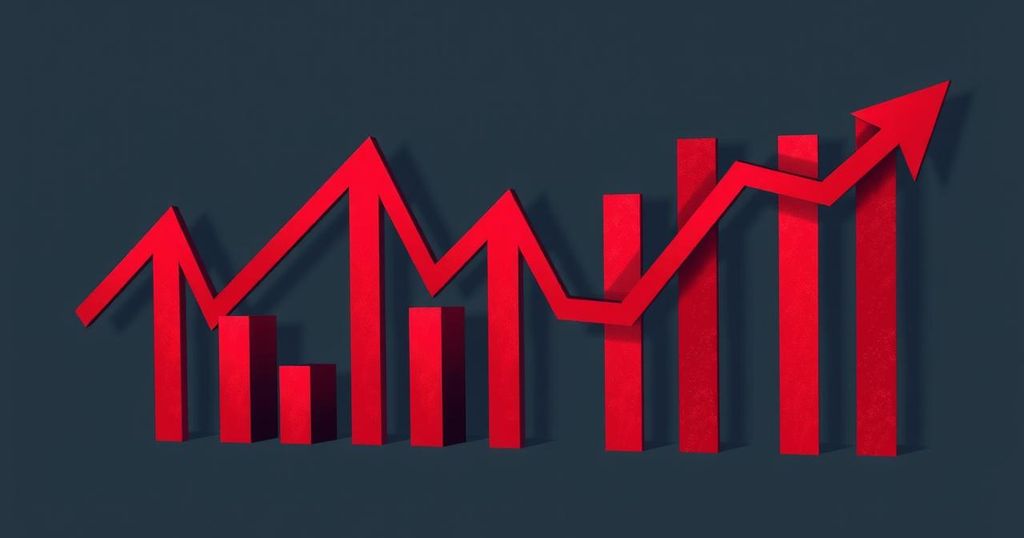On February 27, oil prices rose due to supply concerns after President Trump revoked Chevron’s license to operate in Venezuela. Brent crude increased by 24 cents to $72.77 per barrel, and WTI crude rose by 18 cents to $68.80. Chevron’s operations accounted for a significant portion of Venezuela’s oil output, and market dynamics shifted amidst US inventory changes and geopolitical discussions.
Oil prices increased for the first time in three days on February 27, as supply concerns resurfaced following President Donald Trump’s announcement to revoke a license previously granted to Chevron for operations in Venezuela. Brent crude futures rose by 24 cents, reaching $72.77 per barrel, while West Texas Intermediate (WTI) crude increased by 18 cents to $68.80 per barrel.
The prior day, oil contracts had settled at their lowest level since December 10 due to an unexpected rise in US fuel inventories, indicating a potential decline in demand amidst ongoing discussions regarding a possible peace settlement between Russia and Ukraine. So far this month, both benchmarks have experienced losses of about 5%.
President Trump’s decision to reverse Chevron’s license, originally granted by former President Joe Biden more than two years ago, is significant as Chevron accounts for approximately 240,000 barrels per day of crude production in Venezuela, constituting over a quarter of the nation’s total oil output. Consequently, this termination of the license prohibits Chevron from exporting Venezuelan crude.
According to Hiroyuki Kikukawa, president of NS Trading, the news concerning Venezuela prompted a short-covering rally in response to the recent downturn, particularly in light of the ongoing ceasefire negotiations between Russia and Ukraine. Furthermore, he mentioned that potential purchases from the US Strategic Petroleum Reserve aided market support, given that WTI was trading close to its lowest point in over two months.
Last week, President Trump reiterated that his administration would promptly replenish the Strategic Petroleum Reserve, criticizing Biden’s approach of utilizing it to reduce gasoline prices.
Market observers are closely monitoring the developments concerning Trump’s negotiations with Russia and Ukraine, particularly as Ukrainian President Volodymyr Zelenskiy prepares to visit Washington to finalize a deal concerning rare earth minerals. The success of this agreement is contingent upon the outcomes of the diplomatic discussions and the continuation of US support.
In parallel, US crude oil inventories experienced an unexpected decline during the previous week alongside a modest increase in refining activity, although gasoline and distillate inventories showed notable gains, as reported by the Energy Information Administration.
Kikukawa noted that the prevailing seasonal off-peak demand period, alongside the shift from kerosene to gasoline usage, suggests that the sell-off driven by rising product inventories has likely reached its limit.
Additionally, Goldman Sachs remarked that the dual objectives of the US government, namely assuring commodity dominance and maintaining affordability, underpin the bank’s baseline forecast for Brent oil prices to remain within the $70-$85 range, which is conducive to sustained growth in US oil production.
In conclusion, oil prices rebounded as concerns over supply emerged following Trump’s revocation of Chevron’s license in Venezuela, which significantly impacts the nation’s oil exports. Market participants are attentive to geopolitical developments and the ongoing dialogues regarding potential peace agreements involving Ukraine and Russia. Furthermore, recent fluctuations in US crude inventories and comments from financial institutions suggest a market stabilization around predicted price ranges amid varying demand dynamics. The overall market response indicates a complex interplay between geopolitical factors, US energy policy, and inventory levels that will shape the oil landscape moving forward.
Original Source: theedgemalaysia.com




